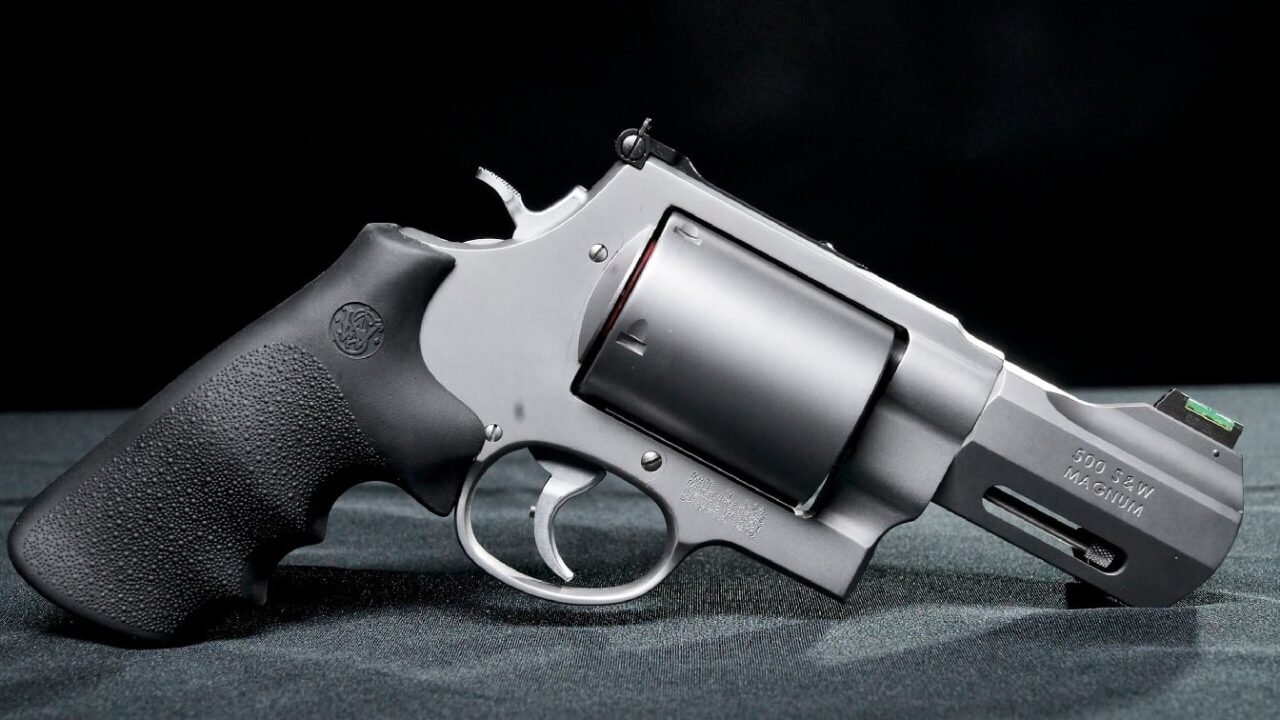As a U.S. Armed Forces veteran and former Federal law enforcement officer, I can vouch firsthand how the U.S. Government loves its acronyms and “alphabet soup” from the three-letter agencies of the Intelligence Community and law enforcement world to agencies with even more letters than that (FEMA, NOAA, NNSA, and so on and so forth).
But plenty of private sector entities dish out their own fair share of bowls of that proverbial alphabet suit, and this includes the firearms industry, with Smith & Wesson being among those that come to mind. In the case of S&W’s double-action (DA) revolvers, we’re only talking single capital letters to differentiate their different frame sizes. Nonetheless, to a novice shooter, it can probably make one’s head spin trying to differentiate between Smith’s so-called J-frames, K-frames, L-frames, N-frames, and X-frames.
Here’s a handy-dandy guide to help handgun neophytes and seasoned enthusiasts learn the differences. These lettered frames lend themselves to WWII warship analogies to help draw the distinctions.
J-Frame: the Small
These are the snubnoses of the Smith revolver family, but, just like Fletcher-class destroyers did during WWII, these little guns punch way above their weight. As I’ve stated multiple times in previous writings, subjectively speaking, I’m not a fan of snubbies in general and Smith J-frames in particular – there are plenty of subcompact semiauto pistols out there that deliver a similar level of ballistic performance while also being far more comfortable and enjoyable to shoot – but I readily acknowledge that they’re effective and get the job done far more often than not, which explains why they still continue to sell well even in this autopistol-intensive day and age.
Prominent examples include the S&W Model 36 Chief’s Special and the M60 LadySmith.
K-Frame: the Medium Sizes
Arguably more so than any other frame series, the K-frames are what truly made Smith & Wesson a smashing success in the U.S. law enforcement and armed private citizen markets alike, starting with the Smith & Wesson .38 Hand Ejector Model of 1899 – now known as the Model 10 – and progressing to the M13 and Model 19 in .357 Magnum, and so forth.
These are analogous to light cruisers such as USS Juneau (CL-52) and the HMS Belfast of D-Day fame.
L-Frame: the Medium-Large
So now we logically progress and beef up to the heavy cruisers – think USS Indianapolis or the Imperial Japanese Navy’s (IJN) Kumano – of the S&W DA revolver line, like the blue-steel Model 586 and stainless steel M686 .357 Magnums, which quite possibly the sweetest-shooting wheelguns bearing the S&W logo. Other examples include the Model 986 9mm and M69 .44 Magnum.
N-Frame: the Large
This is undoubtedly the most famous of the Smith revolver classes, thanks of course to Clint Eastwood as San Francisco PD Inspector Harry Callahan and his immortalization of the S&W Model 29 .44 Magnum via his “’Do I feel lucky?’” speech in the original 1971 “Dirty Harry” film. Jim Belushi’s reference to the same gun as “the big boy on the block” in the 1988 action film “Red Heat” co-starring Arnold Schwarzenegger certainly didn’t hurt either.
But the Model 29, which debuted in 1955, wasn’t even the first N-frame gun. That distinction actually belongs to the very first .357 Magnum, initially known as simply the Registered Magnum and nowadays known as the Model 27. There’s also the proverbial “redheaded stepchild” of the Magnum world, the underrated and underappreciated Model 57 .41 Magnum (I happen to be the proud owner of one of these). Not to mention the Model 25-5 in the Old West classic .45 Colt caliber (AKA “.45 Long Colt”) and the M610 in 10mm Auto.
These are the Iowa-class battleships of the S&W “fleet” (so to speak).
X-Frame: Extra Large
It’s probably no mere coincidence that Smith & Wesson chose the “X” designation for its eXtra-large revolvers. Here we’re talking about this century’s “big boy on the block,” the behemoth S&W Model 500, as well as less heavily publicized monsters such as Model 350 in the new 350 Legend caliber and the Model 460XVR (“X-treme Velocity Revolver”) in .460 S&W Magnum.
Think of these as being the equivalent of super-battleships, i.e. the IJN’s Yamato, Musashi, and Shinano (before the latter warship was converted into an ill-fated supercarrier).
Are there bigger handguns than the S&W500, by the way? Well, sure, there were the British Army .577 caliber revolvers of the Victorian Era, but those are mega-dollar museum pieces, not valid choices for present-day “shootin’ irons.” I guess that – in keeping with their 19th-century theme – you can analogize them with HMS Victory.
Christian D. Orr is a Senior Defense Editor for 19FortyFive. He has 34 years of shooting experience, starting at the tender age of 14. His marksmanship accomplishments include: the Air Force Small Arms Ribbon w/one device (for M16A2 rifle and M9 pistol); Pistol Expert Ratings from U.S. Customs & Border Protection (CBP), Immigration & Customs Enforcement (ICE), and the Federal Law Enforcement Training Center (FLETC) Criminal Investigator Training Program (CITP); multiple medals and trophies via the Glock Sport Shooting Foundation (GSSF) and the Nevada Police & Fires Games (NPAF). Chris has been an NRA Certified Basic Pistol Instructor since 2011.
From 19FortyFive

